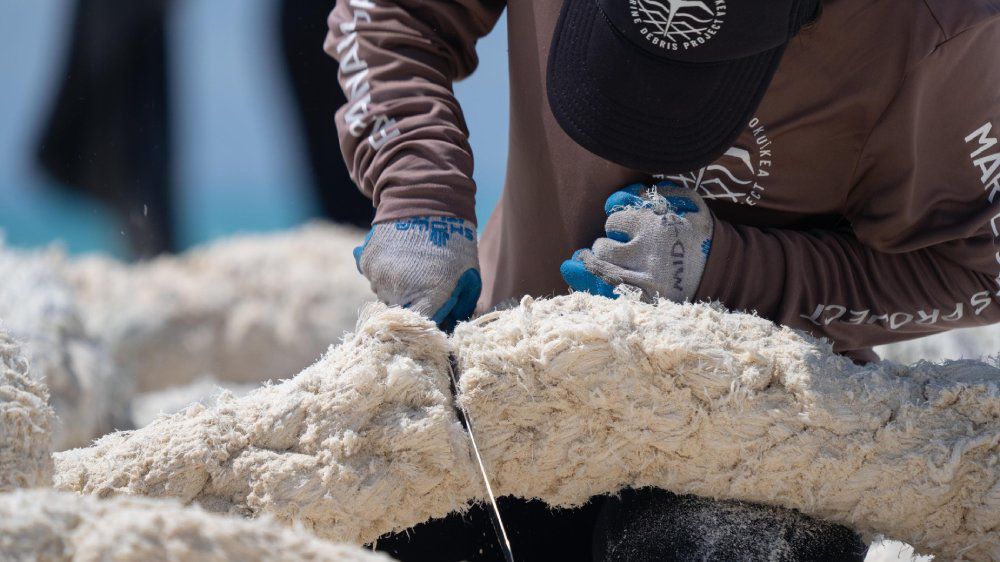
Marine Debris Hack-A-Thon aims to find solutions to ‘hack’ through fishing nets
How did your country report this? Share your view in the comments.
Diverging Reports Breakdown
Hack-A-Thon seeks solutions for derelict fishing nets
Inaugural Marine Debris Hack-A-Thon launched by University of Hawaii Sea Grant College Program and PMDP. Competition seeks to harness Hawaii’s brightest minds to develop solutions that can make a real difference in ocean conservation. Over 100,000 pounds of marine debris accumulate each year in remote Papahānaumokuākea, a UNESCO World Heritage Site. Participants are challenged to design and develop next-generation tools to more efficiently cut through and remove derelict fishing nets from marine environments. Submissions are due by 11:59 p.m. HST July 31. The grand prize winner will be announced immediately following the celebration at Waikiki Aquarium.
What You Need To Know Over 100,000 pounds of marine debris accumulate each year in remote Papahānaumokuākea, a UNESCO World Heritage Site
The Hack-A-thon is a cutting-edge challenge that calls on individuals or teams to develop new, innovative tools that can be used to cut through and remove derelict fishing nets
The competition seeks to harness Hawaii’s brightest minds to develop solutions that can make a real difference in ocean conservation
Participants are challenged to design and develop next-generation tools to more efficiently cut through and remove derelict fishing nets from marine environments
Enter the inaugural Marine Debris Hack-A-Thon launched by the University of Hawaii Sea Grant College Program and PMDP. The Hack-A-thon is a cutting-edge challenge that calls on individuals or teams to develop new, innovative tools that can be used to cut through and remove derelict fishing nets.
Over 100,000 pounds of marine debris accumulate each year in remote Papahānaumokuākea, a UNESCO World Heritage Site. The debris includes massive tangles of fishing nets that can each weigh several tons, as well as thousands of pounds of plastic pollution. Since PMDP can only head out to Papahānaumokuākea twice a year at most, an astonishing amount of nets accumulate — there is an estimated 950,000 pounds backlog of accumulated fishing nets according to PMDP — many of them enveloped in thick marine growth that needs to be cut through.
The competition seeks to harness Hawaii’s brightest minds to develop solutions that can make a real difference in ocean conservation. Participants are challenged to design and develop next-generation tools to more efficiently cut through and remove derelict fishing nets from marine environments.
“This isn’t just a competition, it’s a challenge to push the boundaries of technology,” said Derek LeVault, quartermaster at PMDP, in a release. “We are in constant collaboration with other organizations and interested parties in our field, but the Hack-A-Thon provides a good opportunity to reach beyond that and find some real innovative solutions to our marine debris cutting problems.”
To take part in the competition, individuals or teams must upload a video (under two minutes) or submit a written (maximum of one page) introduction of themselves and their proposed tool. Submissions are due by 11:59 p.m. HST July 31. Enter your submission to this website.
On December 13, participants will get to showcase their designs and compete for the title of hackathon champion at a celebration at Waikiki Aquarium. The grand prize winner will be announced immediately following the celebration. Additional information here.
“Gaining efficiency in cutting the masses of marine debris will free up time to go search for more, resulting in a cleaner sanctuary and less ensnared marine life such as turtles, seals, sharks and the coral reef itself,” LeVault said.
